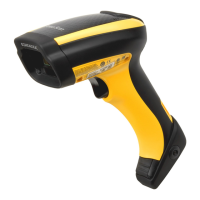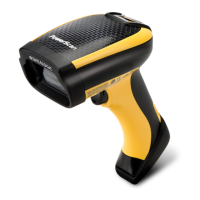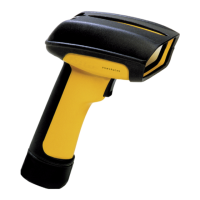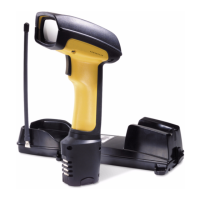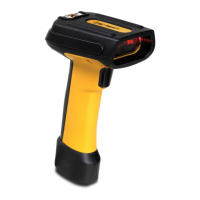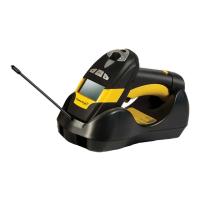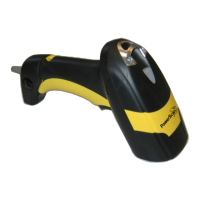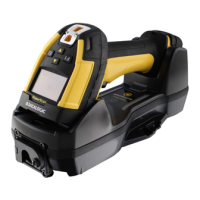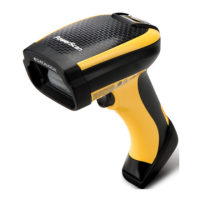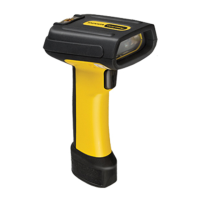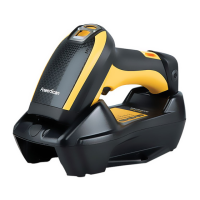Do you have a question about the Datalogic PowerScan 9501-AR Series and is the answer not in the manual?
| Type | Handheld Barcode Reader |
|---|---|
| Technology | Laser |
| Scan Rate | 100 scans per second |
| IP Rating | IP65 |
| Reading Distance | Up to 1 meter |
| Connectivity | USB, RS-232 |
| Operating Temperature | -20°C to 50°C |
| Drop Resistance | 6.5 ft (2 m) to concrete |
| Power Supply | Rechargeable Li-ion battery |
| Storage Temperature | -40°C to 70°C |
| Humidity | 5% to 95% (non-condensing) |
Information about the manual's purpose and content structure.
How to obtain assistance through website, resellers, or telephone.
General description of the PowerScan 2D -AR family and its models.
Important safety precautions for handling and charging the battery.
Methods and tools available for configuring the reader.
Instructions for checking contents and retaining packaging for potential service.
Steps to connect the reader and prepare it for communication with its host.
Step-by-step guide for physically connecting the interface cable to the reader.
Procedures for setting up the BC9xx0 cradle, including physical installation.
Information on connecting the cradle to the host device via interface and power connectors.
Methods for configuring the base station, including software, strings, and bar codes.
Guide to selecting the correct interface type for the reader's connection to the host.
Steps to establish wireless connections between the reader and base station or host.
Overview of configurable parameters, logically grouped for easy access.
Settings specific to the RS-232 serial interface configuration.
Configuration options for keyboard emulation modes.
Options for controlling message strings sent to the host.
Settings for operating modes, indicators, and universal scanner settings.
Options for configuring reader scanning modes and behavior.
Configuring individual settings for various 1D barcode symbologies.
Configuring individual settings for various 2D barcode symbologies.
Options to configure beeper behavior for RF operation.
Features for managing reader and base station configuration synchronization.
Options for storing scanned labels in handheld memory when disconnected.
Configuring the inclusion of source radio data in transmitted labels.
Features specific to the PBT9501-AR Bluetooth model.
Features specific to the PM9501-AR models.
Details on the reader's physical dimensions and weight.
Specifications for voltage, current, and battery life.
Information on light source, tolerances, field of view, and resolution.
Lists supported 1D and 2D barcode symbologies and interfaces.
Environmental specifications like operating temperature, humidity, and drop resistance.
Specifications for the radio communication features of PBT9501-AR and PM9501-AR.
Visual examples of common 1D barcode symbologies.
Visual examples of GS1 DataBar barcode variants.
Visual examples of common 2D barcode symbologies.
Default settings for global interface parameters.
Default settings for RS-232 serial communication parameters.
Default settings for keyboard wedge emulation.
Default settings for data formatting options.
Default settings for reader operational parameters.
Default settings for individual 1D barcode symbologies.
Default settings for individual 2D barcode symbologies.
Default settings for wireless communication features.
Default settings specific to PBT9501-AR Bluetooth models.
Default settings specific to PM9501-AR models.
Default settings for display and keyboard operations.
Bar codes representing numeric digits for keypad input.
Defines how control characters are mapped to scancodes for different interfaces.
Explains key definitions for modifier keys and combinations.
